This post is part of a larger deep dive
Curious about the role of the book of Genesis and the Maya creation myth in The Fountain? Check out The Fountain Explained!
Or read the full The Fountain article!
This post is part of a larger deep dive
Curious about the role of the book of Genesis and the Maya creation myth in The Fountain? Check out The Fountain Explained!
Or read the full The Fountain article!
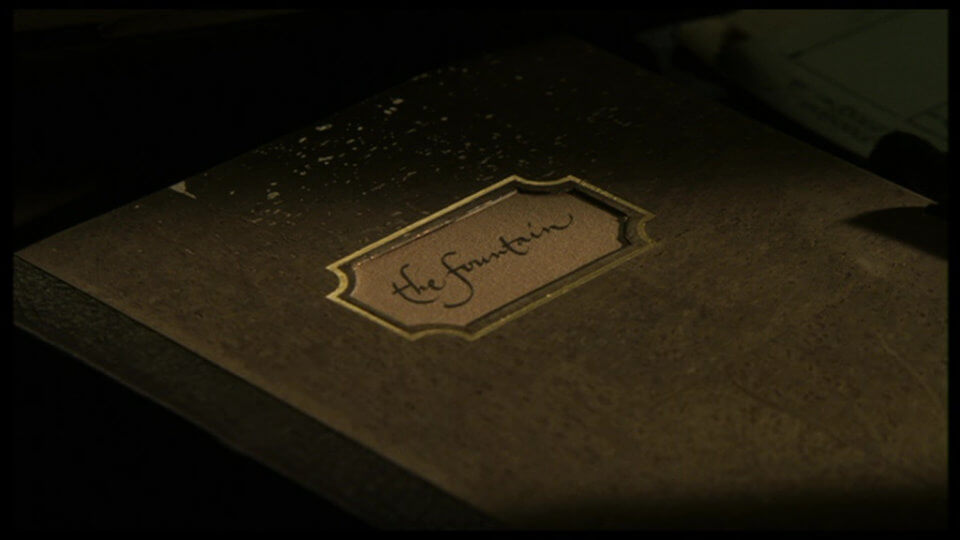
The film opens with this quote:
“Therefore, the Lord God banished Adam and Eve from the Garden of Eden and placed a flaming sword to protect the tree of life.”
Genesis 3:24
This is actually a modified version of the original phrase. According to the New American Standard Bible, Genesis 3:24 reads:
“So He drove the man out; and at the east of the Garden of Eden He stationed the cherubim and the flaming sword which turned every direction to guard the way to the tree of life.”
Genesis 3:24
There are many biblical and Mayan mythology references in the movie The Fountain. In my view, these references are meant to portray Tom’s emotional journey towards acceptance of mortality.
Tom (or, perhaps more precisely, Tom’s mind) is in fact a composite of both Tomás Verde and cosmonaut Tommy.
In the following sections I will elaborate on this.
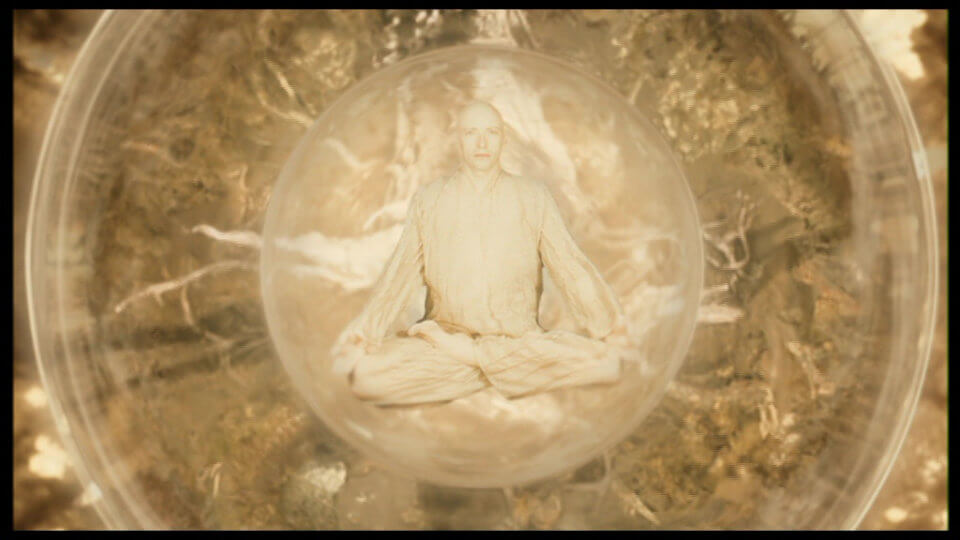
In the future, cosmonaut Tommy is on a journey to reach Xibalba, the nebula containing the dying star. He is traveling with a tree from which he eats the bark to be able to remain immortal. The cosmonaut says that once Xibalba dies (i.e., when the star goes supernova) the tree will be reborn – it will bloom.

It’s clear that the tree the cosmonaut is speaking with is a version of Izzi. For example, when the cosmonaut interacts with it, the hairs of the tree lift up, just as when present-day Tom kisses Izzi in the neck, making the hairs lift up.
Also, whenever the cosmonaut speaks to the tree, the things he says are reminiscent of what Tom whispers to Izzi in several parts throughout the film. For example, the cosmonaut approaches his lips close to the tree and whispers “Don’t worry, it will be alright”. Tom also has the habit of whispering things to Izzi, like when she was at the hospital and Tom whispered “It’s ok Iz. Everything is going be alright.”
So the cosmonaut believes that when he and Izzi (the tree) reach Xibalba, Izzi will somehow resuscitate (become human?).
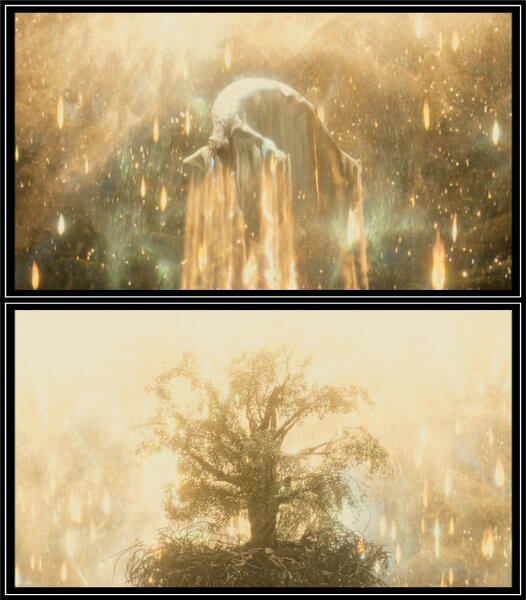
Some authors have suggested that perhaps the cosmonaut’s story really takes place in the future. That somehow Tom manages to live for hundreds of years and is on the quest to revive Izzi.
I once saw this possibility likely, but now find it very unlikely.
Let’s first list the arguments why this possibility was considered.
It’s true that after Izzi’s death, Tom decides to continue his research into finding a “cure” to death. An argument could be made then, that Tom succeeded and applied his antidote on himself, allowing him to live for as long as he liked.
However, this doesn’t really fit. First of all, even if he miraculously found a way to cheat death, we would need to assume that he succeeded within a few years after Izziy’s death (the cosmonaut looks about the same age as Tom after all), which is extremely unlikely.
Second, when the star explodes into a supernova, the cosmonaut is incinerated and the atoms that comprised Tomas are absorbed by the tree which we see flourishing for a brief moment. Well, if a tree is in outer space, it will die immediately, especially with the blast from a supernova. So, I tend to see the blooming as a metaphor for Tom and Izzi’s rejoining.
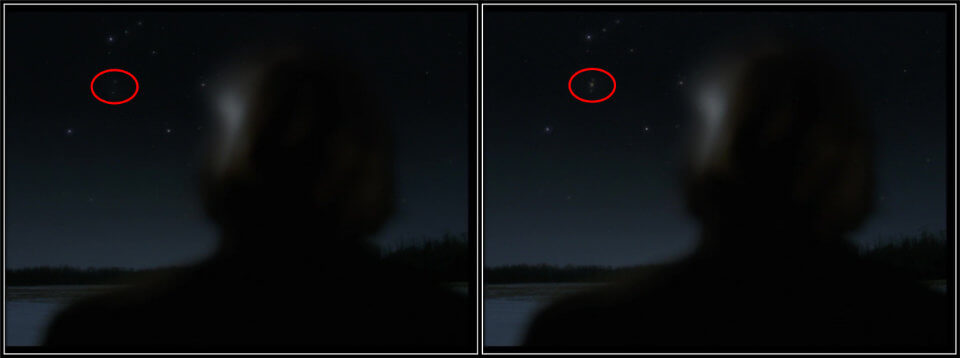
Third, at the end of the movie, Tom seems conformed with Izziy’s death and says his goodbyes at her grave. Moreover, when he looks at the nebula, it suddenly vanishes. Now, this coincides with the explosion the cosmonaut was involved in. So these two events appear linked, and as I argued above, I believe this is because the cosmonaut is somehow the mind of Tom.
Also, when the conquistador dies, the ring mysteriously appears next to the cosmonaut. Even if Tom had found the antidote to live forever, that wouldn’t allow him to conjure things up out of thin air.
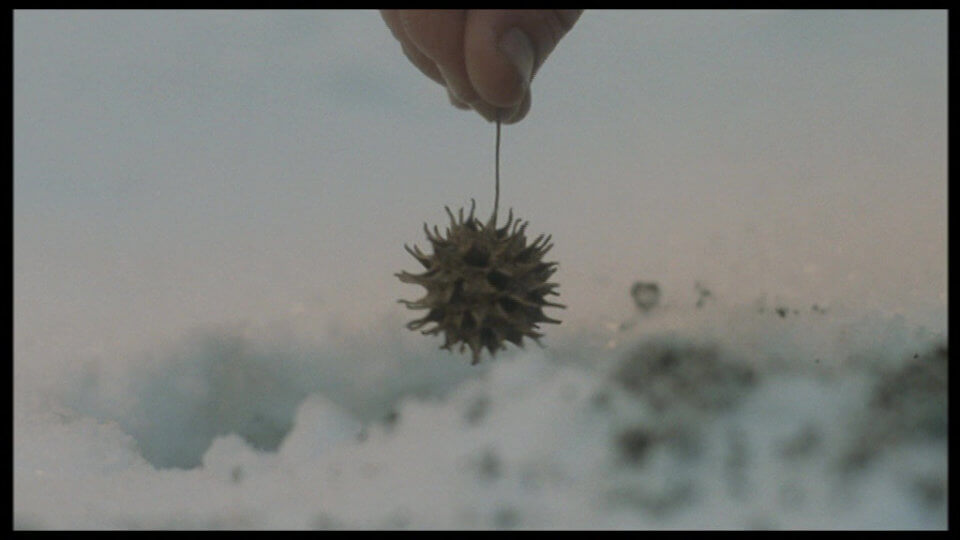
There is, however, another point in favour for the cosmonaut being real. After Izzi’s death, present-day Tom plants a sweet gum seed over Izzi’s grave. Izzi had previously told Tom the story of a Mayan guide whose father had died but he planted a seed at his father’s grave. The seed became a tree, nourished by the nutrients of the father’s corpse. The father grew into the wood and flowers, and when a sparrow ate the tree’s fruit, his father flew with the bird.
So, you could argue that Tom intended a similar thing to happened with Izzi. He planted the seed and waited until it matured, so that it could absorb the nutrients from her body.
But here’s the problem. Assuming that conditions are perfect and the seed does sprout, the rate at which a sweet gum tree grows is about 5 cm (2 in) per year. For the tree to reach the maturity we see in The Fountain, Tom would have to wait at least 30 years! Not a problem if he found the cure to immortality, but, again, he would be an old man by then…
And then Tom would need to overcome some serious hurdles: for example, ensure that he removed the tree from the soil while preserving Izzi inside, prevent that sparrows come and eat the fruit and take her somewhere else, and so one and so forth. You see the problem surely.
So, I don’t think Tom took Izzi’s story in the literal sense (he’s a scientist after all). His action of planting the seed at her grave was more symbolic, in my view.

My interpretation of the future scenes is simply that they are the events unfolding in present-day Tom’s mind.
For one thing, the cosmonaut appears to have hallucinations about actual memories from present-day Tom. Here are some examples:
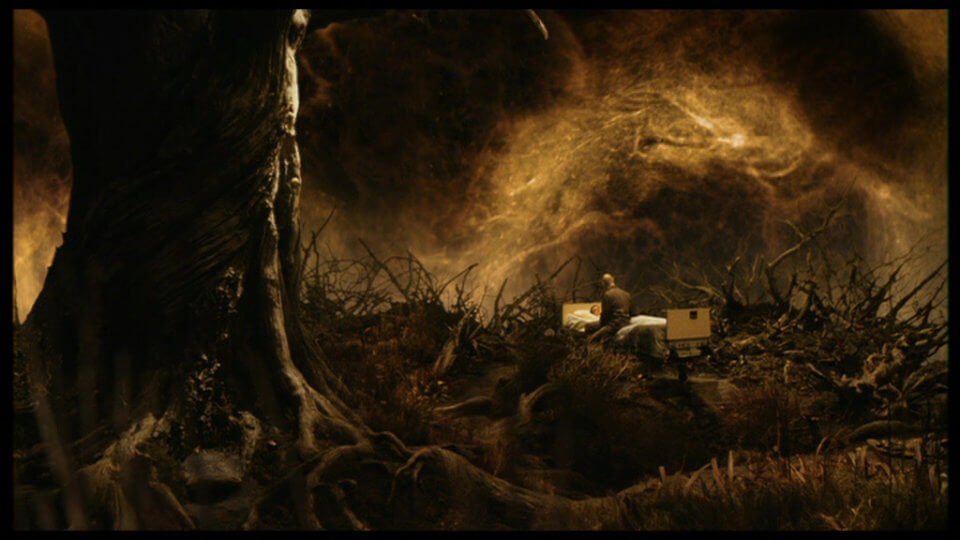
1) When Izzi comes to Tommy’s office and asks him to take a walk with her, or when he sees her in a hospital bed. For example, after Izzi has a seizure and ends up in the hospital, Tom sits next to her. In the next scene, we see the cosmonaut also sitting on a hospital bed where Izzi is lying. However, when the cosmonaut gets up, both the bed and Izzi suddenly vanish.
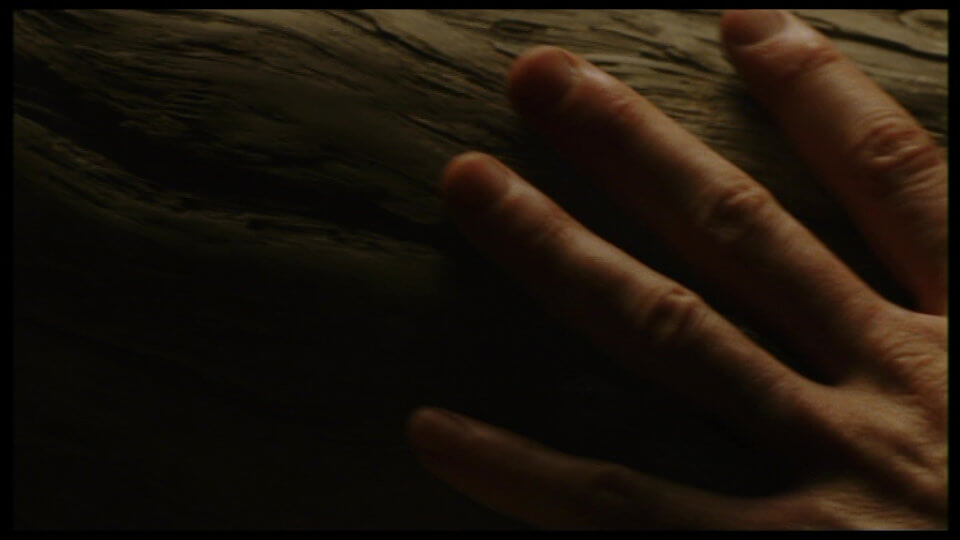
2) Also, at some point in the film, the cosmonaut caresses the tree and the movement continues with the tree being replaced by Izzi’s body in the present timeline.

3) After Izzi collapses at the museum we see the cosmonaut’s spaceship turning counterclockwise. That image is faded and replaced by Tom moving in circles, also counterclockwise
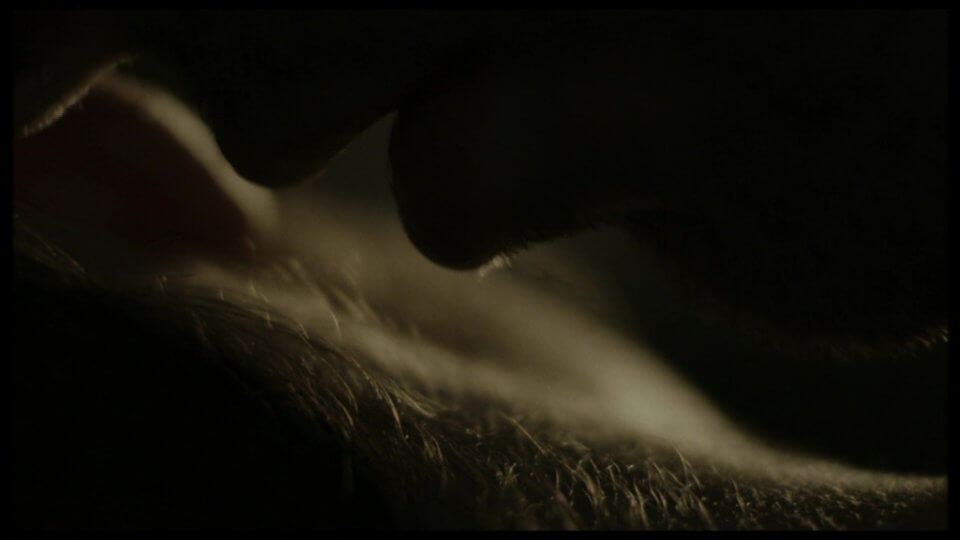
4) When Tom whispers to Izzi “Don’t worry. We are almost there.” at the hospital, the cosmonaut had said the same thing to the tree a few moments before.
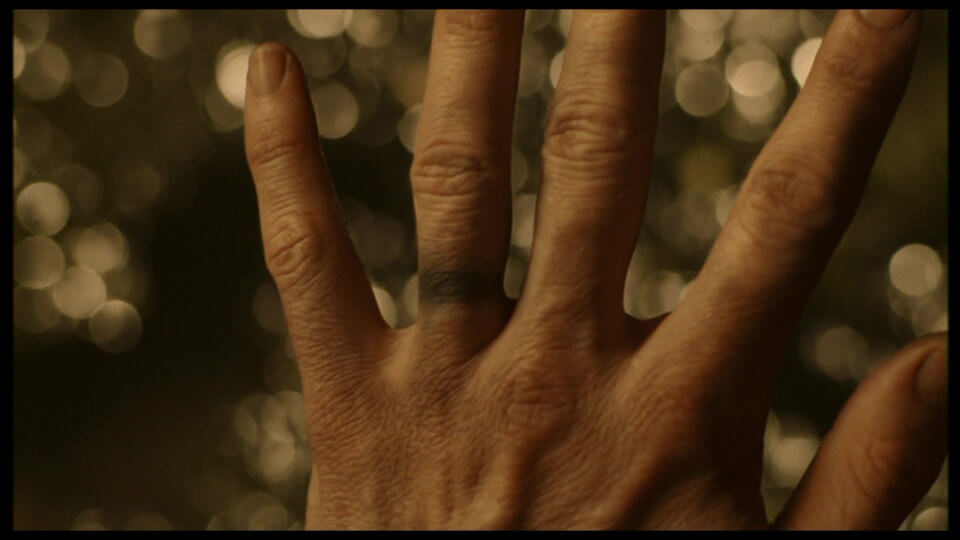
5) When Tom tattoos a ring on his finger with ink and sees the result, the cosmonaut does the exact same thing.
6) Izzi’s death at the hospital coincides with the death of the cosmonaut’s tree.
Note how closely linked the timings these events in present and future are occurring. It’s as if the the events of the future were a representation of present-day Tom’s emotional mindset.
In this vein, the cosmonaut is Tom’s mental construct of his refusal to accept that Izzi is dying and there is nothing he can do about it.
At one time, Izzi says to present-day Tom “Finish it!” so that he finishes the last chapter of her book, which Izzi decided not to write.
Why not?
Because she is trying to help Tom come to terms with the fact that she is going to die, and that he shouldn’t be afraid. That is why she begs him to listen to all those stories about Mayan mythology related to death and rebirth. For example, giving him hints such as the book beginning in Spain but ending in Xibalba, the place where the dead souls would be reborn. Or when she asks him his opinion about “Death as an act of creation”. Or when she tells him that she has been trying to write the last chapter but she hasn’t been able to get the sentence “Death was his father’s road to awe” out of her head.
By gradually priming Tom to see death from the perspective of Izzi (who by now has come to terms with her imminent death and isn’t afraid anymore), Izzi believes it will make him see that he too shouldn’t be afraid of death.
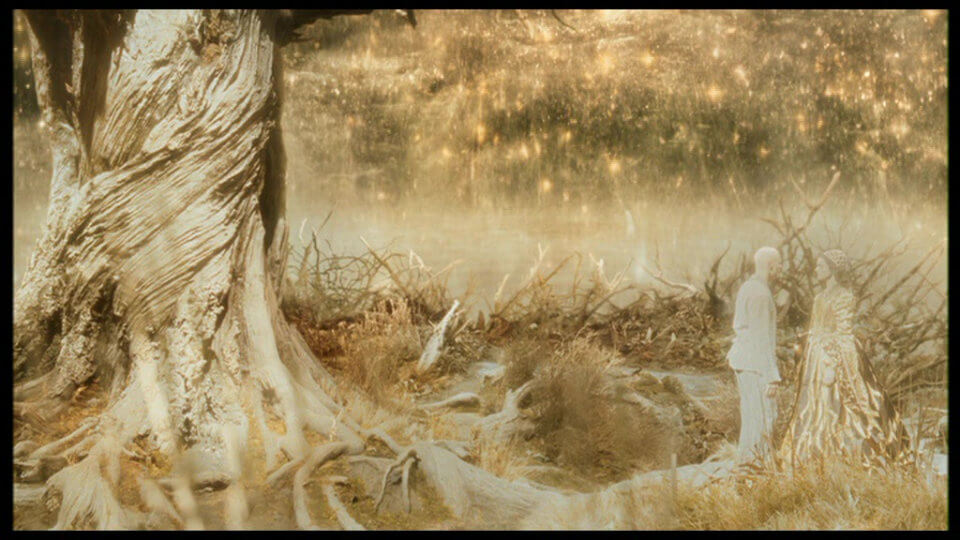
The cosmonaut appears tormented by Izzi’s constant whisperings “Finish it!”. But once present-day Tom accepts Izzi’s departure from this life, the cosmonaut realises he is going to die (during the encounter with the queen of Spain) and appears as though he has found his inner peace.
So, in my view, the cosmonaut is not real, at least not in the physical sense. The cosmonaut’s journey is Tom’s own journey. They are one and the same.
Interestingly, in the special edition of the DVD, the production designer mentions that the journey from the lift to Izzi’s room is essentially the journey of the cosmonaut’s spaceship from Earth to the dying star. In a way, this corroborates the view that the present and future events are interconnected.
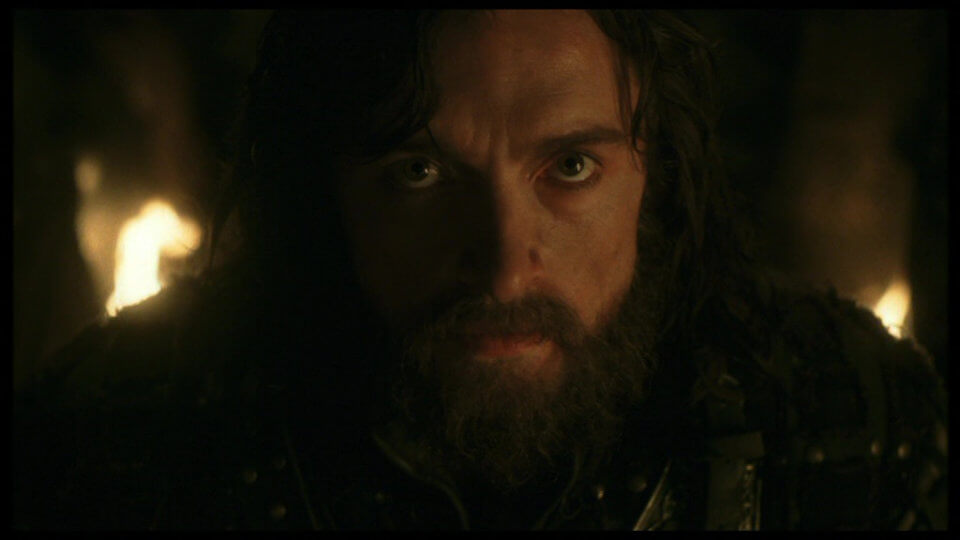
The past is perhaps the least ambiguous part of the entire film. Many clues converge to the idea that the events surrounding Tomás Verde are a visualisation of the events in the novel Izzi is writing.
Here are some clues:
1) Izzi explicitly mentions that she is writing a novel about 16th Century Spain.
2) Izzi is fascinated by the Maya civilization – she has gone to South America to learn about the Mayan culture.
3) Some phrases used in the conquistador story are direct quotes from Izzi. For example, when Izzi is in the hospital she says the phrase “The road to awe” to Tom. The Mayan priest in the Conquistador story says the exact same phrase (in the proto-Mayan language).
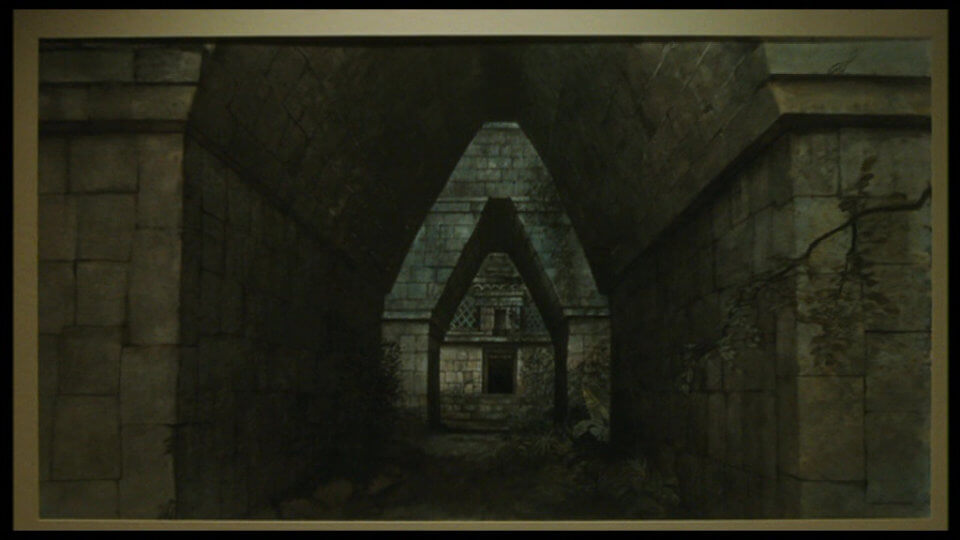
4) There is a drawing of the entrance of a Mayan pyramid when present-day Tom returns home from work. That entrance is strikingly similar to the entrance to the pyramid containing the tree of life we see in the Conquistador story.
5) When Tom reads the book, we are able to read some of the passages which sound like the Conquistador story.
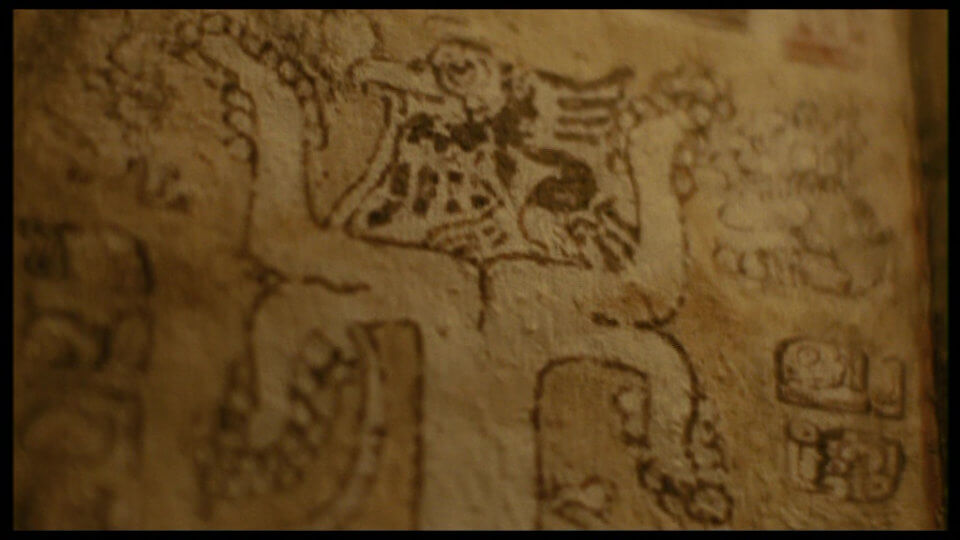
6) The book at the museum explains the Maya creation myth. The First Father is the first human who sacrificed himself to make the world, which is what the Maya priest says to Tomas at the pyramid. Izzi also mentions the tree of life bursting out of First Father’s stomach. His body became the tree’s root, which is what happened to Tomas after drinking the sap of the tree.
This all looks reasonable and all the reviews I’ve read do not contest this possibility.
However, I believe there is more to it.
In my view, the past time-line is not solely a visual transcription of the events in Izzi’s book. Just as the cosmonaut’s journey represents present-day Tom’s acceptance of death, so is the past time-line a complement of that journey.
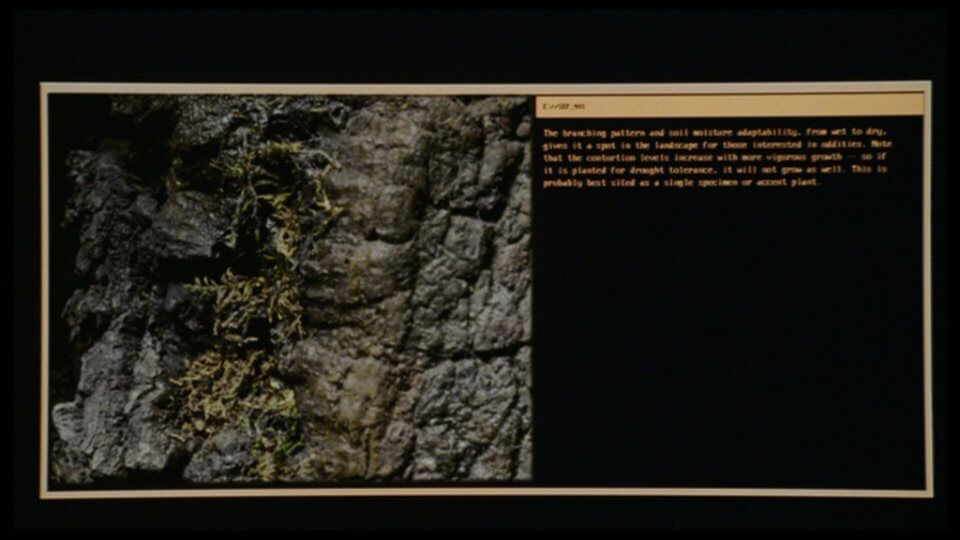
The story Izzi is writing is about Queen Isabella of Spain who is loosing her Kingdom to, and being held captive by, the Inquisition. Sending Conquistador Tomás Verde to find the tree of life so that he and she can become immortal. The queen gives Tomás a ring for him to wear when he finds Eden, and when he returns she shall be his Eve and together they will live forever.
Izzi also tells Tom that the story begins in Spain but ends in Xibalba.
First, can you see the parallels between the life of Tomás/Queen and Tom/Izzi? Just as Tom thinks the salvation to Izzi’s cancer lies in the botanical compound found in South America, so does the salvation of the Queen lies in the Tree of Life located somewhere in the jungles of South America.
In the sub-section Creation, I mentioned that God gave Adam and Eve full liberty to eat the fruit from the Tree of Life which allowed them to remain immortal. The Tree of Knowledge of Good and Evil was, however, off limits.
Adam and Eve disobeyed God, and ate an apple from the forbidden tree, resulting in their expulsion from the Garden of Eden.
I kind of see a parallel between Adam and Eve’s temptation to eat the fruit of the Tree of Knowledge of Good and Evil, with Tom’s and Tomás’ futile quest to cheat death.
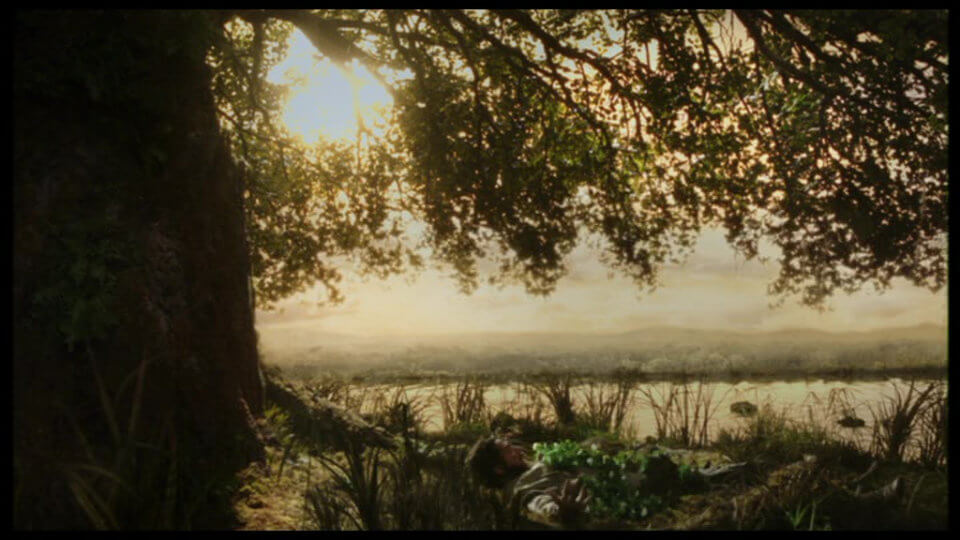
Second, Tom says: “Death is a disease… it’s like any other. And there is a cure. A cure. And I’ll find it.”. When Tomás greedily drinks the sap from the Tree of Life, he dies in the process, being transformed into vegetation. In a way, I see the tragic ending of the Conquistador as an allusion to Tom’s pointless objective to cure death.
It is also interesting the desperation and poor reason shared between Tomás and Tom Creo in their search for immortality. The conquistador wants to find the tree of life at all costs, even if that means killing his fellow conquistadors. Tom wants to find the cure to death at all costs, even if that means alienating everyone around him, spending little time with Izzi and ignoring all ethical responsibilities.
Remember the story of Adam and Eve? They were expelled from paradise because they were tempted to become more omnipotent like God. Tomas sipping the sap from the Tree of Life, or Tom Creo attempting to cheat death, is like trying to play God – a futile task.
Another interesting reference to the bible has probably gone unnoticed by many viewers. After Izzi suffers a seizure at the museum, a disoriented Tom goes back to his research lab and insists in going forward with his research. We notice that his colleagues are reluctant, because Tom is acting unethically.
During surgery, he asks his colleagues to prepare another monkey by the name of Cain. If you read the section Uncreation, you will know that Cain, filled with jealousy and greed, kills his own brother and tries to omit the assassination from God. God punishes him by sending him away.
My interpretation is that Tom does not want to concede that he can do nothing to prevent Izzi’s death and insists in finding a cure that will never materialise (at least not in his lifetime). His thirst to succeed leads him to do unethical research, distance himself from reality, and pushing everyone away.
There are subtler clues to suggest that, just as the future and present are linked, so is the past also connected to the present.
For example, during a scene we see Tom driving his car on an empty road in the direction of the city. The same scene is shown in the past but instead of a car, Tomás is riding a horse towards the city where the Inquisitor is located (see video above).
If you observe these two scenes carefully, you’ll notice that Aronofsky used the same shooting technique in both: in the distance the camera is shooting upside down, and when the car/horse pass by the camera, it shoots upright, with the car/horse disappearing as it travels towards the city.
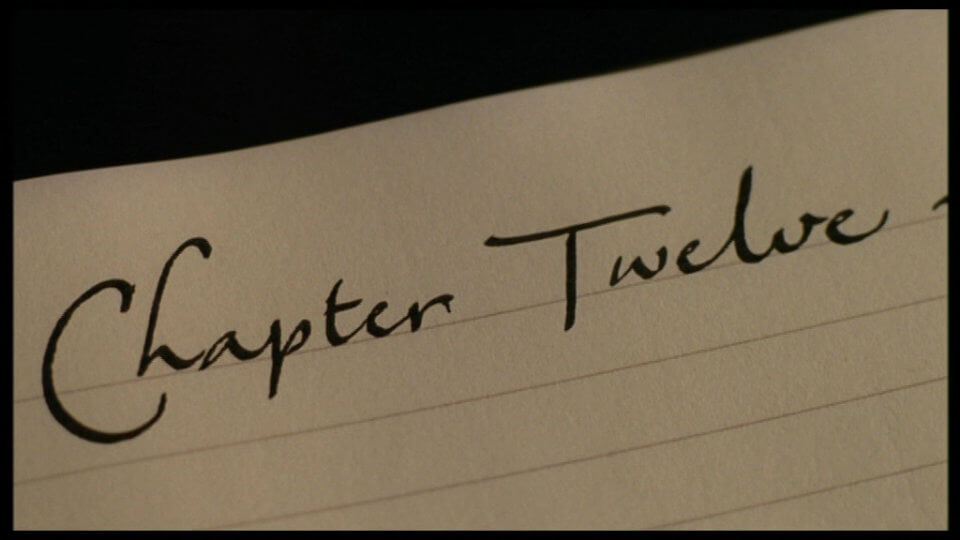
The Mayan priest says “The First Father sacrificed himself for the tree of life. Enter and share his fate! Death is the road to awe!”.
If you listen carefully, the priest then says “Xibalba” at the end of the sentence in the proto-Mayan language that he is speaking. Xibalba is where the Mayans believed resided the underworld. The Mayan priest represents the guardian of Xibalba, he is one of the lords of the underworld.
The connection between the Mayan priest with the flaming sword with the bible is also interesting. In Genesis 3:24, God stations a cherubim in front of the Garden of Eden with his flaming sword to prevent human access to the Tree of Life. The Mayan priest appears to be fulfilling that role.
With the intervention of the cosmonaut the Mayan priest mistakes (or maybe not) Tomás with the First Father. Interestingly, after drinking the sap, Tomás has a similar fate to that of the First Father in Mayan mythology, his body becoming part of the tree.
Now, the last chapter Izzi wrote (Chapter 11) ended climatically when the Mayan priest was about to strike Tomas with his fire sword.
Tom will now have to give an ending to the novel, and most sources agree that the events that unfold is present-day Tom’s conclusion of Izzi’s story.
If so, choosing to save Tomás from the Mayan priest only to have him killed after finding the much-sought tree of life is nothing but ironic.
In a way, this ending could represent present-day Tom’s realisation that nobody should be above Nature and that everyone should accept mortality and come to terms with it.
As a curiosity, the unfinished chapter is Chapter 12, which is an interesting choice of a number. Twelve is a recurrent number in the bible and mean the complete people of God. For example, Jacob has 12 sons, who later will become the 12 tribes of Israel. Jesus chose 12 disciples. More importantly for this analysis, the Tree of Life bore 12 crops of fruit (Revelation 22:2).
Maybe it’s a coincidence, but maybe it isn’t – after all, 12 chapters seem rather few for a novel.

Hugh Jackman said in an interview that the three characters (Tomás, the conquistador, present-day Tom and the cosmonaut) are “in essence the same man”.
I wholeheartedly believe so.
In the previous sections I attempted to make the point that past and present, as well as future and present, are connected. In a way, the past and the future are simply peeks into present-day Tom’s mind.
If my interpretation is correct, then, by the this logic, the past and the future should also be linked, and the bridge connecting them is, again, Tom’s mind or consciousness.
For instance, when Tomas reaches the Tree of Life, he approaches his fingers and the hairs of the tree raise, just like the cosmonaut did with his own tree.

However, the most obvious connection is when the Mayan priest is about to strike a deadly blow on Tomas. The cosmonaut suddenly appears hovering above ground, in a meditating pose. Tomas is nowhere to be seen, only appearing after the cosmonaut disappears.
Now, this scene was very confusing to me at first. The Mayan priest seems to actually see the cosmonaut, who he believes to be the First Father (see the section The Maya: The story of creation). So it’s as if the two time lines interact, which is why some authors have suggested that both are real. For instance, the cosmonaut may use meditation to open a psychic link into the past.
However, there is another and, in my opinion, more credible possibility. Note that Tomás and the cosmonaut never appear together. In the scene where the cosmonaut appears before the Mayan priest, either the cosmonaut replaces Tomás, or Tomás replaces the cosmonaut. They are never both present in the same physical space. This tentatively suggests that they are one and only one character.
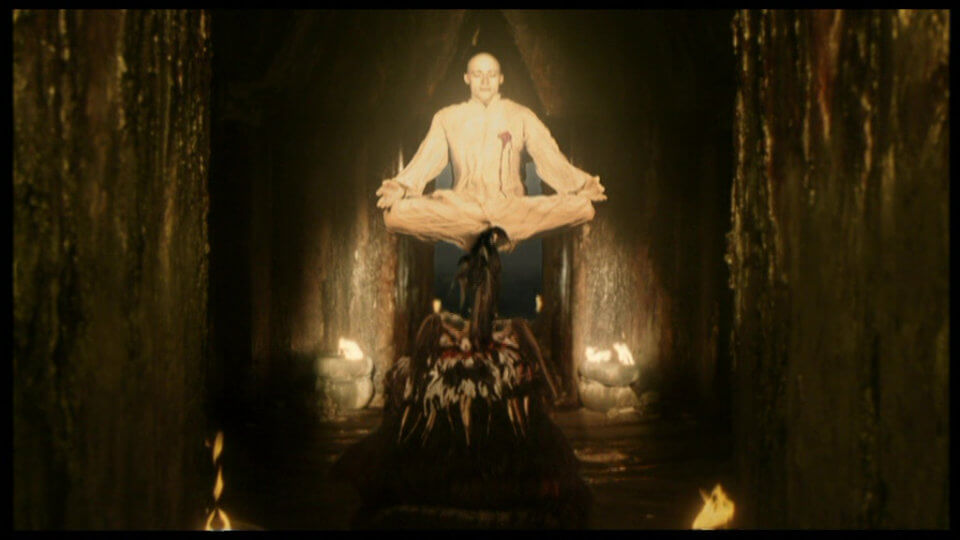
Also, play close attention to the part when the cosmonaut levitates in front of the Mayan priest. He’s bleeding from his left side, as if he’d been stabbed close to the heart. Tomás was actually stabbed on the left side of his belly, but maybe Aronofsky didn’t want to give it away too obviously. Still, the fact both men are bleeding is another clue that the two men are one and the same.
And since the story with the conquistador is most likely the story envisioned by Izzi (as established above), then the cosmonaut appearing in that story must mean that he isn’t real either – it just wouldn’t make sense.
The cosmonaut is visited by the queen, and is relieved that he’s going to die. He hears once more Izzi’s voice saying “Finish it!”, at which point he agrees and says “Okay!”. Then we go back to the present, where we see an alternate version of the scene when Izzi asks Tom to take a walk in the snow. Instead of going back to the lab to perform the surgery on Donovan, Tom leaves the lab and meets Izzi outside.
Why are we seeing this alternate version of the present, which clearly did not happen?
My take is that this marks the pivotal moment when Tom has accepted mortality and Izzi’s fate. He isn’t afraid anymore. Had he been given the chance to go back in time, Tom would have chosen to be with Izzi in the snow, not chasing a cure which would never materialise in time to save her.
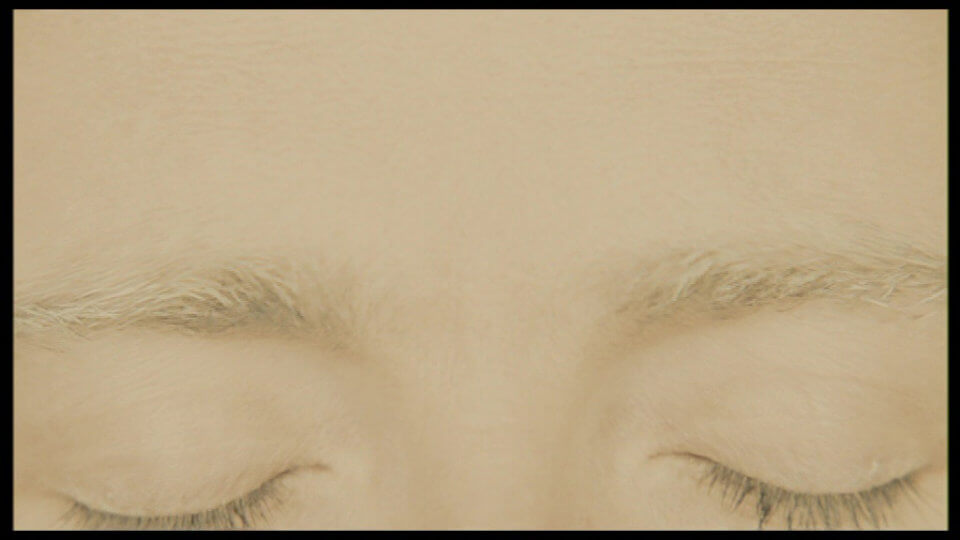
At this point, the cosmonaut leaves his spaceship and travels towards the dying star (Xibalba). The camera zooms in on his forehead, where the fight between the Mayan priest and Tomás resumes. We also hear Izzi again saying the words “Finish it!”.
Once again, there are two subtle clues here to suggest the past and future time lines are interwoven, in the sense that they are happening inside present-day Tom’s mind. The first clue is the zooming in, as if indicating that we are entering Tom’s consciousness. The second, we hear Izzi muttering the words “Finish it!” just about when Tom is supposed to continue Izzi’s novel (remember, Izzi stopped writing right when the Mayan priest is about to strike Tomás with the fire sword).
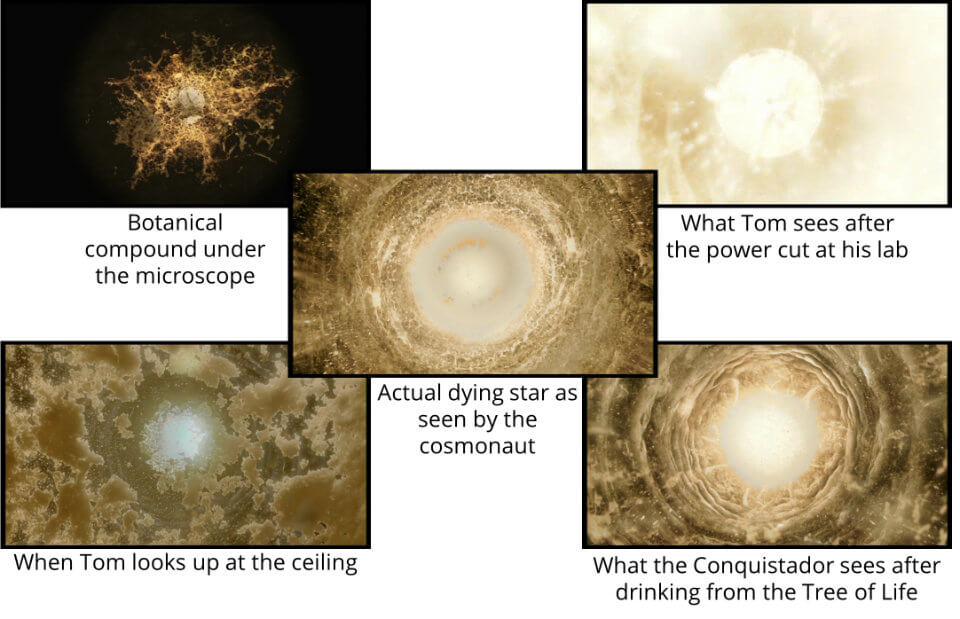
Lastly, the dying star provides another glue linking all three time-lines.
In the present, when Tom has the epiphany to use the botanical compound from a tree they found in Guatemala, he looks to a hole in the ceiling and sees a light which looks very much like the dying star.
Then, Tom looks at the compound through the microscope, and, again, we see an image that looks astonishingly similar to the dying star.
Futhermore, close to the end of the film, he goes back to his lab and the lights go out. He then looks up and sees again the dying star about to burst.
In the past, when Tomás drinks the sap from the Tree of life, he looks up and sees something that looks strikingly similar to the dying star, just moments before going supernova.
In the future, after Tomás Verde dies, the cosmonaut is incinerated by the supernova explosion. Shortly after, present-day Tom looks up in the sky and sees the nebula disappearing, Xibalba has died.
So, the supernova explosion symbolises the destruction of that part of Tom that did not want to accept mortality.
Izzi asks Tom what he thinks about the idea of “Death as an act of creation.” A similar idea is present in the Genesis, where God decides to un-create to recreate (see sections Creation, Un-creation and Re-creation) .
To me, the deaths of the Conquistador and the cosmonaut symbolise perfectly that idea of “Death as an act of creation”. Their demise enabled the rebirth of a new Tom, a Tom who conquered the fear of death.
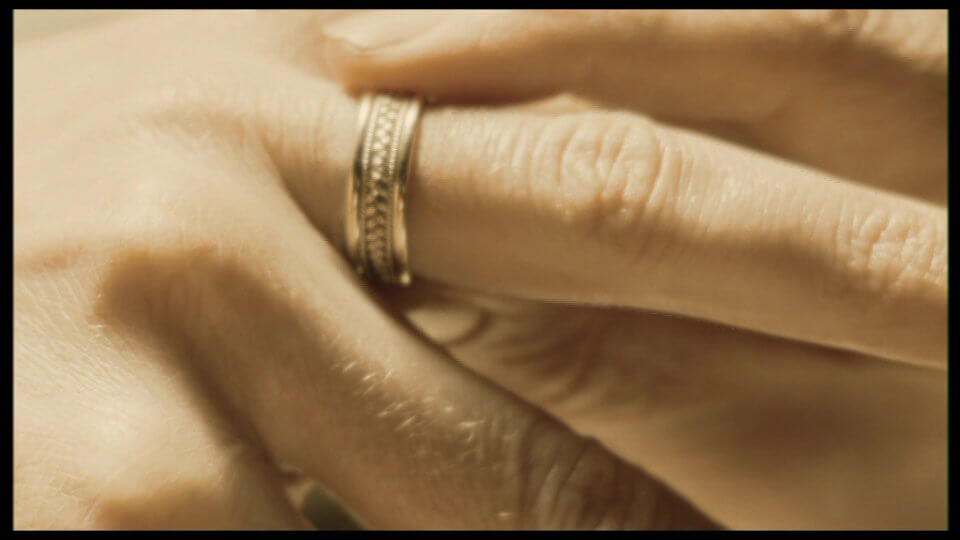
One thing that bothered me from the beginning was the focus on the wedding ring.
Present-day Tom takes off the ring before surgery. When he goes to pick it up, it’s gone and he never finds it again.
He beats himself up because he lost his ring, until he decides to tattoo one with ink after Izzi’s death.
The ring has also a pivotal role in both the past and the future.
In the past, Queen Isabel gives a ring to conquistador Tomás. She tells him that the ring is to remind him the promise he had made – to deliver Spain from bondage (i.e., to free Spain from slavery). He shall wear the ring when he finds Eden.
When Tomás finds the Tree of Life, he drinks its sap and sees something that looks strikingly similar to a dying star, just moments before going supernova.
This prompts him to take out the ring and put it on his finger. He mutters the words: “My queen. Now and forever, we shall be together.”. However, before he has the chance to do it, he has a seizure and flowers start growing from within his own body, killing him in the process.
In the future, shortly before Tomás is transformed into flowers, he drops the ring. The cosmonaut then is seen picking up the ring and looking straight at the exploding star. He then sticks the ring on his finger, just before the sun implodes and goes supernova.
So we have a contradiction here. In the past, Tomás fails to wear the ring. In the future, he succeeds.
Here’s how I see this.
The action of putting the ring on the finger is, again, symbolising acceptance of mortality. In the case of the conquistador, his inability to accept his own mortality and thirst for the power that can free Spain and the queen no matter what, leads to his death.
In a way, the conquistador represents the idea of attempting to trick mortality, of never accepting the fact that we will all going to die and there is nothing we can do about it. The death of the conquistador is tantamount to the death of these ideas in present-day Tom.
In contrast, the cosmonaut accepted his fate, his own mortality. He knows that he will die and he is ok with that. Successfully wearing the ring symbolises that acceptance.
The Fountain is one of those films that some love and some hate.
Many critics have harshly critised the movie, stressing the confusing plot, excessive covert messages and abrupt transitions (as of September, 2023, The Fountain has an average rating of 53% in the Tomatometer and a metascore of 51). It will come as no surprise that I strongly disagree with all those negative reviews.
To me, The Fountain is Aronofsky’s most glorious work to date. I loved the storyline, the acting, the visuals, the soundtrack, the emotional content, the bizareness… Everything!
In the film, past, present and future timelines are interwoven, describing the journey of a single man, Tom Creo. It is a painful but crucial journey of learning to accept the inevitability of death.
Izzi, Tom’s wife, takes great pains to make him realise that even though she will die, there is no reason to be afraid. She never explicitly instructs him how to come to terms with death, but presents him with subtle cues in the form of Mayan mythology. Izzi believes this is a journey Tom alone needs to undertake – he needs to “Finish it!”.
The demise of both Conquistador Tomás Verde and cosmonaut Tommy (both characters representing Tom’s mental processes) were a necessary psychological milestone for Tom coming to terms with mortality. “Death as an act of creation” as Izzi so poetically put it.
Perhaps Izzi truly believes in the idea of reincarnation. Maybe she believes there is an actual Xibalba, where her soul will be reborn and, when the time comes, be with Tom, forever.
I prefer to think that all the stories about Mayan Mythology she told were merely symbolic. That the transformation of one’s body into a tree, the birds eating the fruit of the tree containing one’s soul, etc, represent the idea that we are all dust from the same stars, and death is simply another act of creation.
Beautiful!
With the Fountain, I feel that I developed a new appreciation for cinema. Ever since I watched the movie, I cannot help but compare every other film to this masterpiece. Very few works have had the impact that The Fountain had had (there have been some though, which I’ll eventually get to analysing in this website).
And the most astonishing fact is that this film was the (severely) abridged version of a much larger production that the team had planned, which, sadly, never saw the light of day.
I can only wonder with awe the brilliance the larger movie would have been… I guess it will remain in the realm of imagination for all eternity.
But I’m ok with that 🙂
See you in the next article!
Leave a comment
Add Your Recommendations
Popular Tags